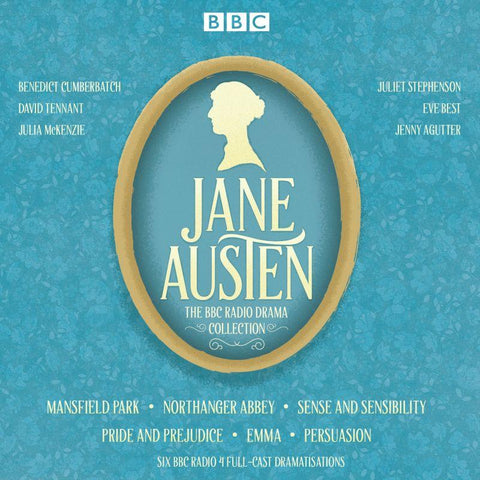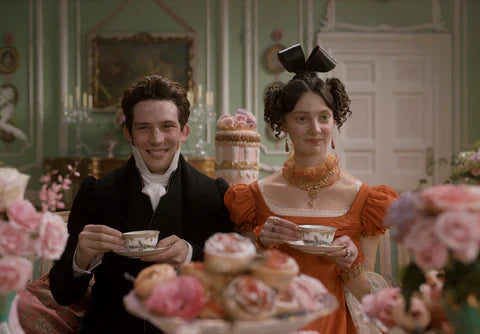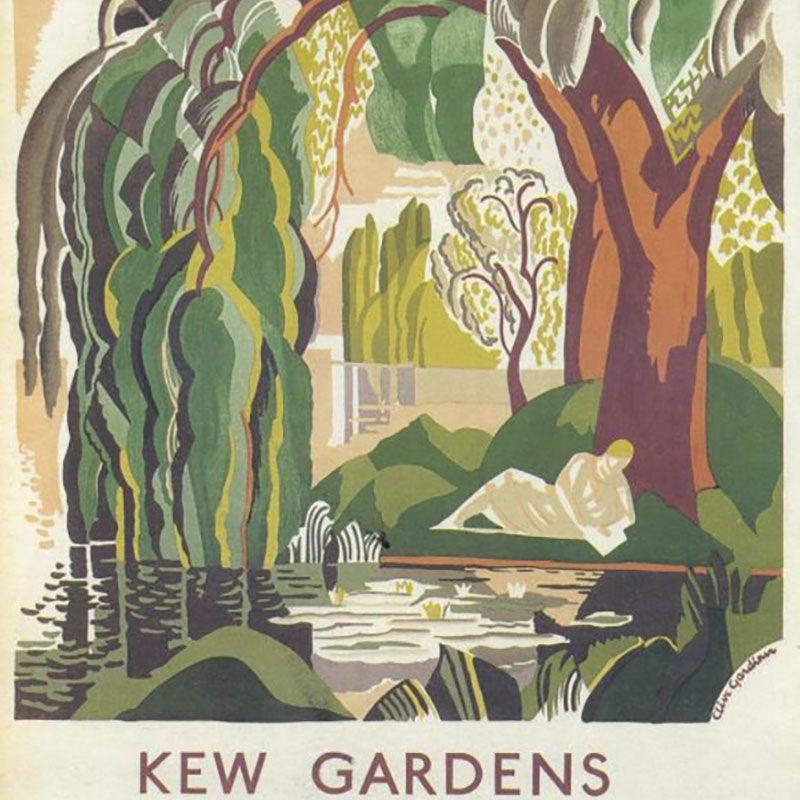London Theatre in the Regency: Covent Garden
Jane Austen Visits Regency Covent Garden
I think you judge very wisely in putting off your London visit, and I am mistaken if it be not put off for some time. You speak with such noble resignation of Mrs. Jordan and the Opera House, that it would be an insult to suppose consolation required... Jane Austen to Cassandra January 8, 1801
The Austen family loved the theatre. They loved attending plays, talking about plays and performances, and they enjoyed acting in plays. Some of Austen's earliest works are in the form of a play and many scenes of plot development in her novels revolve around the acting in and attending of theatrical events.  In Austen's day, it was not unusual for a serious work to be followed by a lighter piece of comedy or opera. Many evening performances included two or even three works in a row. When visiting the London home of her brother, Henry Austen, Jane seems to have visited the theatre as often as she could, viewing some of the greatest stage artists of her time including Mrs. Siddons, Mrs. Jordan and Edmund Kean in his acclaimed role as Shylock.
In Austen's day, it was not unusual for a serious work to be followed by a lighter piece of comedy or opera. Many evening performances included two or even three works in a row. When visiting the London home of her brother, Henry Austen, Jane seems to have visited the theatre as often as she could, viewing some of the greatest stage artists of her time including Mrs. Siddons, Mrs. Jordan and Edmund Kean in his acclaimed role as Shylock.
Austen seems to have preferred the light comedic plays, in contrast to those of operatic prowess. In 1814, she wrote to Cassandra that "We are to see 'The Devil to Pay' to-night. I expect to be very much amused. Excepting Miss Stephens, I daresay 'Artexerxes' will be very tiresome." This was an unusual position to take, for the play has often been remarked as "one of the most successful and influential English operas of the eighteenth century." The story, adapted from an Italian opera written in 1729, was recreated by Thomas Arne in English, thus appealing to both music lovers and opera fans alike. It was performed over and over again after its premiere in 1762. Mozart attended a performance in 1765 as did Joseph Haydn, who exclaimed, "I had no idea we had such an opera in the English language." Despite her profession that she was, "very tired of 'Artexerxes', highly amused with the farce, and, in an inferior way, with the pantomime that followed", Jane nevertheless copied out the score of the overature of the opera into one her music books. These handwritten books give an insightful glimpse into the musical taste of the Austen family. They are held by the Jane Austen Memorial Trust, at Chawton Cottage, and contain selections from Handel, Mozart, Gay, Gluck, Clementti, and Haydn, as well as popular songs of the day. The aria, "The Soldier Tir'd of War", from Artexerxes remains a popular showpiece to this day.
The Theatre Royal in Regency Covent Garden
The foundation of the Theatre Royal, Covent Garden lies in the letters patent awarded by Charles II to Sir William Davenant in 1660, allowing Davenant to operate one of only two patent theatre companies (The Duke's Company) in London. Shortly thereafter, in 1683, John Blow composed Venus and Adonis, often thought of as the first true English language opera. Blow's immediate successor was the better known Henry Purcell.
Despite the success of his masterwork Dido and Aeneas (1689), in which the action is furthered by the use of Italian-style recitative, much of Purcell's best work was not involved in the composing of typical opera. Instead, he usually worked within the constraints of the semi-opera format, where isolated scenes and masques are contained within the structure of a spoken play, such as Shakespeare in Purcell's The Fairy-Queen (1692) and Beaumont and Fletcher in The Prophetess (1690). The main characters of the play tend not to be involved in the musical scenes, which means that Purcell was rarely able to develop his characters through song. Despite these hindrances, his aim (and that of his collaborator John Dryden) was to establish serious opera in England. Rather sadly, however, these hopes ended with Purcell's early death at the age of 36.  Following Purcell, the popularity of opera in England dwindled for several decades.
Following Purcell, the popularity of opera in England dwindled for several decades.
A revived interest in opera occurred in the 1730s which is largely attributed to Thomas Arne, both for his own compositions and for alerting Handel to the commercial possibilities of large-scale works in English. Arne was the first English composer to experiment with Italian-style all sung comic opera, with his greatest success being Thomas and Sally in 1760.
Although Arne imitated many elements of Italian opera, he was perhaps the only English composer at that time who was able to move beyond the Italian influences and create his own unique and distinctly English voice. His modernized ballad opera Love in a Village (1762) began a vogue for pastiche opera that lasted well into the 19th century. Charles Burney wrote that Arne introduced "a light, airy, original, and pleasing melody, wholly different from that of Purcell or Handel, whom all English composers had either pillaged or imitated".
Besides Arne, the other dominating force in English opera at this time was George Frideric Handel, whose opera serias filled the London operatic stages for decades and influenced most home-grown composers, such as John Frederick Lampe who wrote using Italian models. This situation continued throughout the 18th and 19th centuries, including in the work of Michael Balfe, and the operas of the great Italian composers, as well as those of Mozart, Beethoven and Meyerbeer, continued to dominate the musical stage in England.
In 1728, John Rich (actor and manager of the Duke's Company at Lincoln's Inn Fields Theatre) commissioned The Beggar's Opera from John Gay. The success of this venture provided him with the capital to build the Theatre Royal (designed by Edward Shepherd) at the site of an ancient convent garden, part of which had been developed by Inigo Jones in the 1630s with a piazza and church. In addition, a Royal Charter had created a fruit and vegetable market in the area, a market which survived in that location until 1974. At its opening on December 7, 1732, Rich was carried by his actors in processional triumph into the theatre for its opening production of William Congreve's The Way of the World.  During the first hundred years or so of its history, the theatre was primarily a playhouse, with the Letters Patent granted by Charles II giving Covent Garden and Theatre Royal, Drury Lane exclusive rights to present spoken drama in London. Despite the frequent interchangeability between the Covent Garden and Drury Lane companies, competition was intense, often presenting the same plays at the same time. Rich introduced pantomime to the repertoire, himself performing (under the stage name John Lun, as Harlequin) and a tradition of seasonal pantomime continued at the modern theatre until 1939.
During the first hundred years or so of its history, the theatre was primarily a playhouse, with the Letters Patent granted by Charles II giving Covent Garden and Theatre Royal, Drury Lane exclusive rights to present spoken drama in London. Despite the frequent interchangeability between the Covent Garden and Drury Lane companies, competition was intense, often presenting the same plays at the same time. Rich introduced pantomime to the repertoire, himself performing (under the stage name John Lun, as Harlequin) and a tradition of seasonal pantomime continued at the modern theatre until 1939.
In 1734, Covent Garden presented its first ballet, Pygmalion. Marie Sallé discarded tradition, along with her corset, and danced in diaphanous robes. Ten years later, there was a royal performance of Handel's Messiah in 1743, which was a success and began a tradition of Lenten oratorio performances. From 1735 until his death in 1759, Handel gave regular seasons at Covent Garden, and many of his operas and oratorios were written for or had their first London performances there. He bequeathed his organ to John Rich and it was placed in a prominent position on the stage, but was among many valuable items lost in a fire that destroyed the theatre in 1808. Rebuilding began in the winter that same year and the second Theatre Royal, Covent Garden (designed by Robert Smirke) opened on September 18, 1809 with a performance of Macbeth followed by a musical entertainment called The Quaker. The actor and manager John Philip Kemble raised seat prices to help recoup the cost of rebuilding, but the move was so unpopular that audiences disrupted performances by beating sticks, hissing, booing and dancing. The Old Price Riots lasted over two months and the management was finally forced to accede to the audience's demands.  During this time, entertainments were varied- opera and ballet were presented but not exclusively. Kemble engaged a variety of acts. Many famous actors of the day appeared at the theatre, including the tragediennes Sarah Siddons and Eliza O'Neill, the Shakespearean actors William Charles Macready, Edmund Kean and his son Charles. On March 5, 1856, fate would have it that the theatre was again destroyed by fire. Work on the third theatre, designed by Edward Middleton Barry, started in 1857 and the new building, which still remains as the nucleus of the present theatre, opened on May 15, 1858 with a performance of Meyerbeer's Les Huguenots.
During this time, entertainments were varied- opera and ballet were presented but not exclusively. Kemble engaged a variety of acts. Many famous actors of the day appeared at the theatre, including the tragediennes Sarah Siddons and Eliza O'Neill, the Shakespearean actors William Charles Macready, Edmund Kean and his son Charles. On March 5, 1856, fate would have it that the theatre was again destroyed by fire. Work on the third theatre, designed by Edward Middleton Barry, started in 1857 and the new building, which still remains as the nucleus of the present theatre, opened on May 15, 1858 with a performance of Meyerbeer's Les Huguenots.
With so much television at our finger tips today, it is often refreshing to find alternative forms of entertainment. Why not take a look at our BBC Radio Drama Collection, featuring audio dramatisations of Jane's six major novels. Although not quite an opera, this will certainly give your ears a treat!
If you don't want to miss a beat when it comes to Jane Austen, make sure you are signed up to the Jane Austen newsletter for exclusive updates and discounts from our Online Gift Shop.




1 comment
Fascinating.
PLW
Leave a comment
This site is protected by hCaptcha and the hCaptcha Privacy Policy and Terms of Service apply.